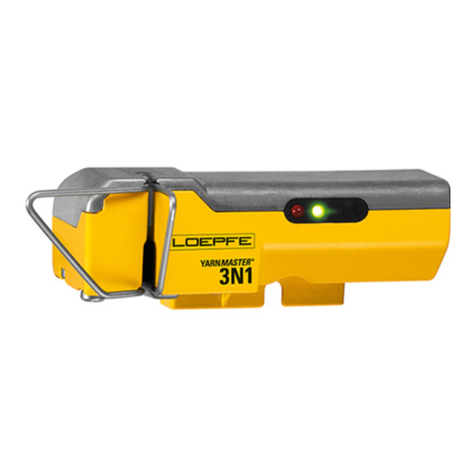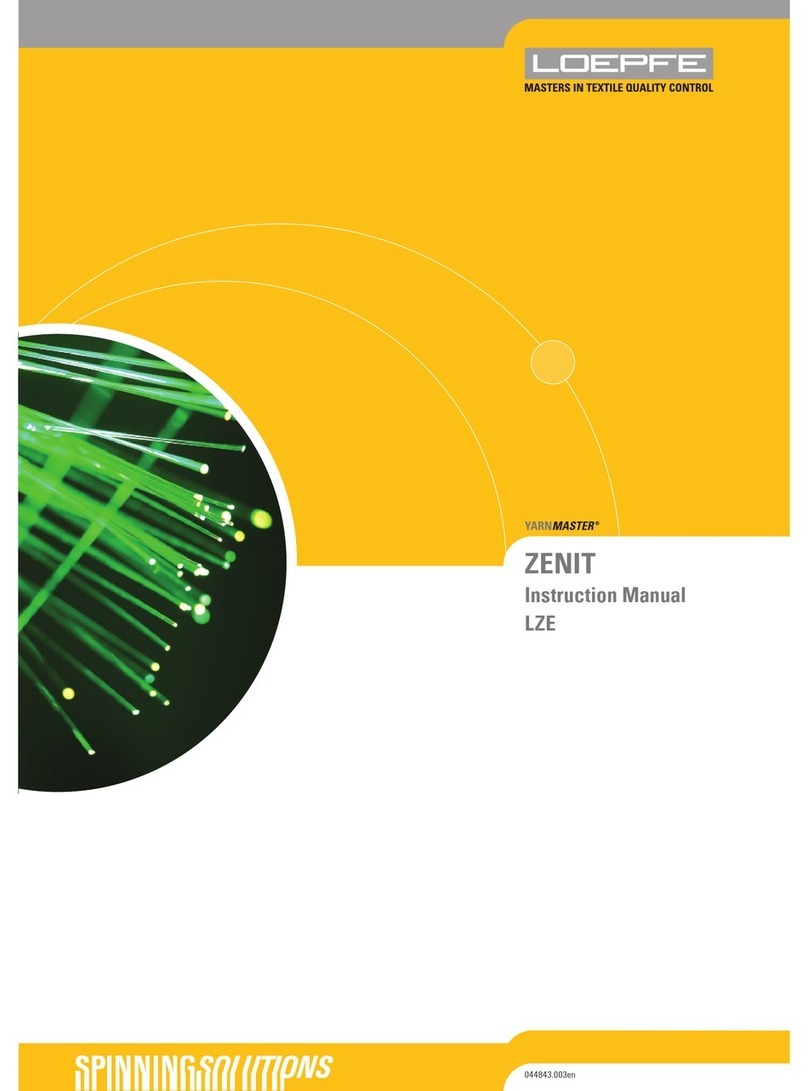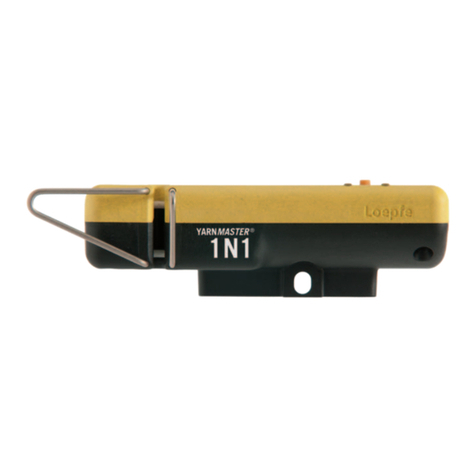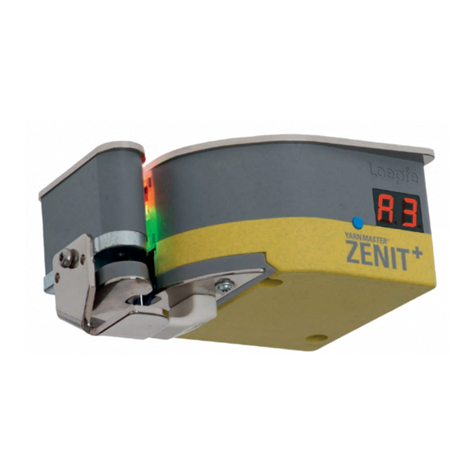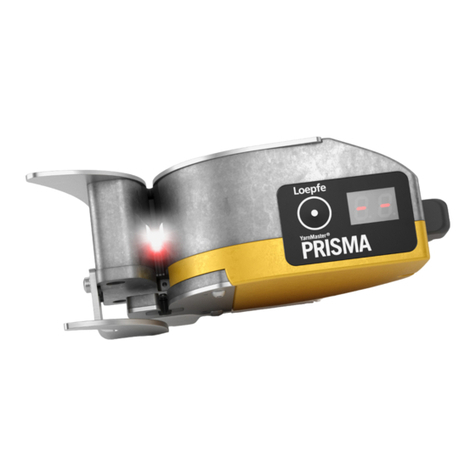
93N1
GENERAL SAFETY INSTRUCTIONS
General Safety Instructions
Risk of fatal injury from electric current!
Only perform maintenance work on electric components
when these are switched off, disconnected from the mains
and potential-free.
DANGER
Risk of contamination, overheating, spark interfer-
ence, fire!
This yarn clearing installation must only be operated
with the covers closed.
CAUTION
NOTICE:
Do not open any sensing head.
Improper operation of the equipment could cause
hazards!
This yarn clearing equipment must only be installed,
commissioned and operated by authorized and trained
personnel.
CAUTION
Electronic components and assemblies (printed cir-
cuit boards) are endangered by electrostatic charges!
Beware of touching the soldered connectors, pin contacts,
printed circuits or electronic components before they have
been discharged statically. Hold the units at the periphery
only.
NOTICE
